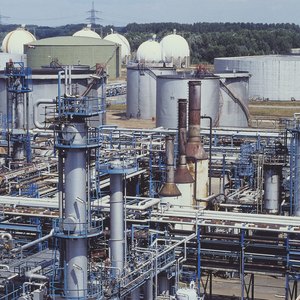
"Capitalizing" a cost allows a business to report that cost as an asset rather than an expense. Not only does this boost the company's value by putting more assets on its balance sheet, it also boosts the company's profit by reducing expenses. Corporate financial accounting follows U.S. generally accepted accounting principles, or GAAP. These principles include guidelines on what a company can capitalize and how it does so.
What Is GAAP?
GAAP is a common acronym in accounting. It stands for "Generally Accepted Accounting Principles" according to the CFA Institute. There are ten basic principles that form the foundation for GAAP. These principles provide the basis for business and corporate accounting.
The Financial Accounting Standards Board (FASB) governs GAAP accounting standards for all publicly traded companies and FASB standards are widely adopted by other organizations as well. The Security Exchange Commission (SEC) recognizes FASB as the setter of standards for corporate accounting. The US government mandates that all publicly traded businesses must strictly adhere to GAAP.
What's an Asset?
GAAP defines a company's assets as the things it owns or controls that have measurable future economic value. If something doesn't fit that description, it can't be capitalized. A fixed asset is a long-term, tangible asset (that is not easily liquidated) and has a useful life of longer than a year. These assets are normally classified as PPE, or "plant, property and equipment" on a balance sheet. These differ from current assets, which are more liquid and are not depreciable.
Land, buildings, equipment, items held in inventory, stocks and bonds, even IOUs from customers (accounts receivable) have measurable future economic value, so a company can capitalize them as assets. Other costs, such as advertising, marketing and research and development, must be expensed. While these costs are certainly intended to produce future value, that value can't be reliably measured at present.
Read More: How to Account for Fixed Assets With GAAP
Difference Between Capitalization vs. Expensing
When companies incur costs, they can either "capitalize" those costs or "expense" them. Capitalizing a cost means converting it to an asset on the balance sheet.
For example, if a company pays $10,000 in cash for piece of equipment, its financial statements don't show that it "spent" $10,000. Rather, they show that it converted $10,000 worth of cash into $10,000 worth of equipment, an asset. Capitalizing an asset will show up on the balance sheet but not the income statement according. Again, the asset must have a useful life of more than a year and it must be greater than the capitalization threshold.
Expensing a cost, on the other hand, means reporting it on the income statement as an outflow of money. If a company pays $10,000 for rent, for example, its financial statements show that money as being "spent." Expenses directly reduce a company's net income, or profit, so the more costs a company can capitalize rather than expense, the greater the profit it can report to shareholders.
Read More: Fixed Asset Capitalization Policy
Understanding GAAP Capitalization Rules
GAAP allows companies to capitalize the full costs of acquiring an asset and preparing it for use. Suppose a publishing company buys a $5 million press from a manufacturer in Germany. Not only can the company capitalize the purchase price of the press, it can also capitalize the cost of transporting the equipment from Germany. Assembly costs, the cost of any necessary modifications to the company's printing plant, even taxes and tariffs paid on the presses, can all be rolled into the capitalized cost.
On a far smaller scale, if a company buys $100 in stock for investment purposes and has to pay a $1 commission, it can capitalize the full acquisition cost: $101.
How to Handle Depreciation
When a company capitalizes an asset, that doesn't necessarily mean it will never have to expense the cost. Hard assets, such as property, plants and equipment, tend to lose value as time passes. Buildings deteriorate, vehicles and equipment break down, technology becomes obsolete.
GAAP recognizes this and it requires companies to expense a portion of the asset's value for each year of its useful life; this is called depreciation. There are multiples methods for calculating depreciation. The asset's useful life, salvage value and the method selected for depreciation should all be considered carefully.
A $5 million printing press, for example, might have a useful life of 25 years, at the end of which it would be worth, say, $200,000 for scrap metal. So the company has to depreciate $4.8 million worth of value over 25 years. Under the most common depreciation method, the company would claim a depreciation expense of $192,000 a year.
Depreciation also serves a second purpose under GAAP: the matching principle. This principle says that when companies report revenue, they must simultaneously report, as expenses, all costs incurred in producing that revenue. For the printing press, the $192,000 in depreciation is an expense incurred to produce the revenue generated by the press that year.
References
Writer Bio
Cam Merritt is a writer and editor specializing in business, personal finance and home design. He has contributed to USA Today, The Des Moines Register and Better Homes and Gardens"publications. Merritt has a journalism degree from Drake University and is pursuing an MBA from the University of Iowa.

